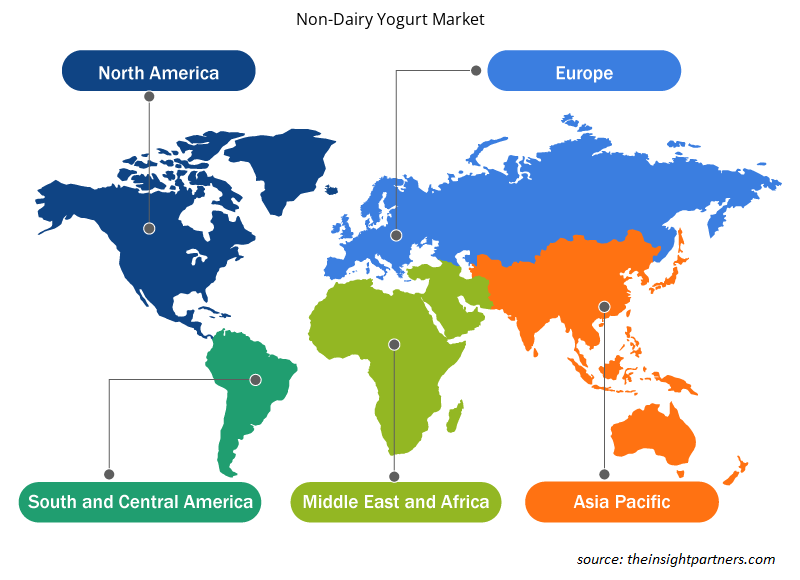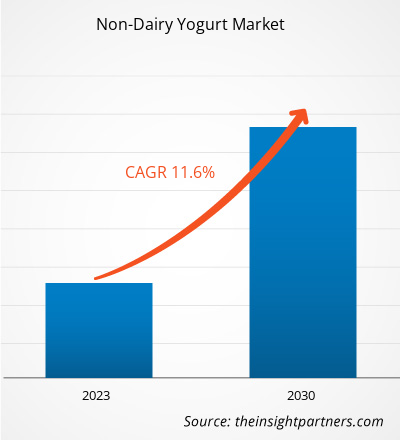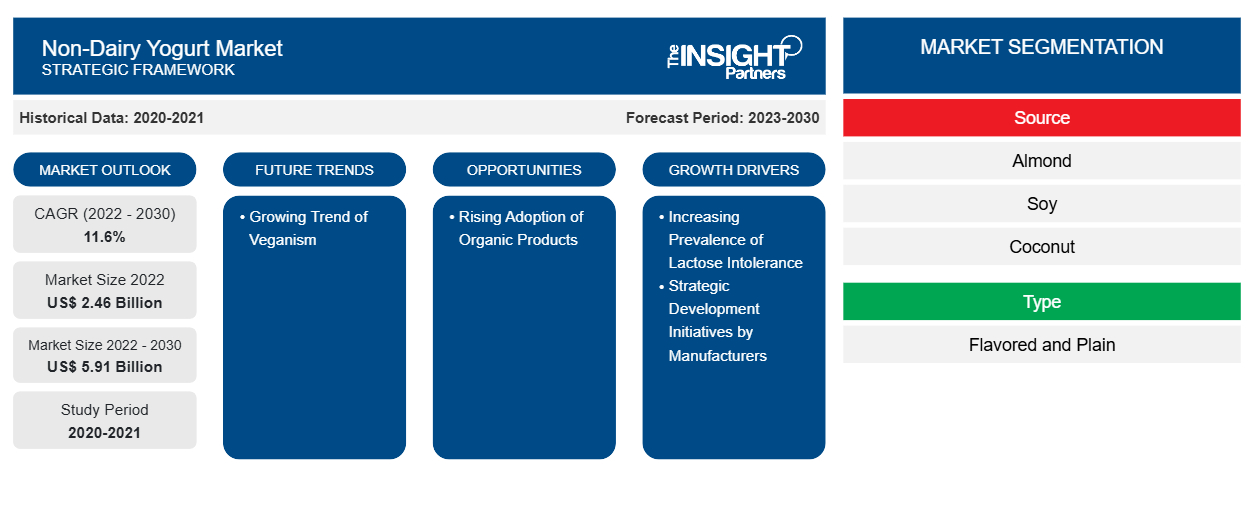[연구보고서] 비유제품 요거트 시장 규모는 2022년에 2,458.17백만 달러로 평가되었으며, 2030년에는 5,908.01백만 달러에 도달할 것으로 예상되며, 시장은 2022년에서 2030년까지 11.6%의 CAGR을 기록할 것으로 예상됩니다.
시장 통찰력 및 분석가 관점:
비유제 요거트는 우유나 유제품에서 유래한 요거트 배양액과 같은 유제품 성분 없이 만든 요거트 유형입니다. 대신 일반적으로 아몬드, 코코넛, 콩 또는 캐슈 우유 와 같은 식물성 원료에서 생산되며 종종 전통적인 유제품 요거트와 유사한 발효 과정을 제공하는 살아있는 박테리아 배양액을 포함합니다. 이를 통해 락토오스 불내증, 채식주의자 또는 유제품이 없는 식단을 따르는 사람들이 비슷한 맛과 질감을 가진 요거트와 유사한 제품을 즐길 수 있습니다. 유당 불내증의 증가와 채식주의 추세가 전 세계적으로 비유제 요거트 시장 성장을 주도하고 있습니다.
성장 동인 및 과제:
비유제품 요거트는 락토오스가 없는 아몬드 밀크, 두유, 코코넛 밀크로 만들어집니다. 게다가 식물성 비유제품 요거트는 기존 요거트와 비슷한 질감, 크리미함, 농도를 가지고 있습니다. 게다가 식물성 비유제품 요거트는 단백질, 칼슘, 그리고 소비자의 일일 영양소 요구 사항을 충족하는 다른 영양소로 강화되어 있습니다. 따라서 소비자들 사이에서 락토오스 불내증과 우유 알레르기가 늘어나면서 비유제품 요거트 시장이 성장하고 있습니다. 게다가 유엔, PETA, Good Food Institute, 그리고 다른 많은 기관들은 채식주의가 기후 위기로부터 지구를 구하는 데 중요한 역할을 할 수 있다고 믿습니다. 축산업이 환경에 미치는 부정적인 영향에 대한 인식이 소비자들 사이에서 높아지고 있습니다. 식물성 유제품의 소비가 증가하면서 탄소 발자국을 최소화하고, 물과 다양한 천연자원을 절약하며, 환경에 미치는 전반적인 영향을 줄이는 데 도움이 됩니다. 따라서 채식주의가 늘어나면서 시장이 성장하고 있습니다. 그러나 비유제품 요거트의 비용은 높은 원자재 비용과 높은 생산 및 마케팅 비용으로 인해 기존 요거트보다 높습니다. 이러한 요인은 비유제품 요거트 시장 성장을 방해할 수 있습니다.
귀하의 요구 사항에 맞게 이 보고서를 사용자 정의하세요
이 보고서의 일부 또는 국가 수준 분석, Excel 데이터 팩을 포함하여 모든 보고서에 대한 사용자 정의를 무료로 받을 수 있으며 신생 기업 및 대학을 위한 훌륭한 혜택과 할인 혜택을 이용할 수 있습니다.
-
이 보고서의 주요 시장 동향을 알아보세요.이 무료 샘플에는 시장 동향부터 추정 및 예측까지 다양한 데이터 분석이 포함됩니다.
보고서 세분화 및 범위:
글로벌 비유제 요거트 시장은 출처, 유형, 특성, 유통 채널 및 지리에 따라 분류됩니다. 출처를 기준으로 비유제 요거트 시장은 콩, 아몬드, 코코넛, 귀리 및 기타로 세분화됩니다. 유형을 기준으로 시장은 풍미가 있는 요거트와 일반 요거트로 나뉩니다. 특성 측면에서 시장은 유기농과 일반 요거트로 나뉩니다. 유통 채널을 기준으로 비유제 요거트 시장은 슈퍼마켓 및 하이퍼마켓, 편의점, 온라인 소매 및 기타로 분류됩니다. 시장은 지리에 따라 북미(캐나다, 미국 및 멕시코), 유럽(독일, 프랑스, 이탈리아, 영국, 러시아 및 기타 유럽), 아시아 태평양(호주, 중국, 일본, 인도, 한국 및 기타 아시아 태평양), 남미 및 중미(브라질, 아르헨티나 및 기타 남미 및 중미), 중동 및 아프리카(사우디 아라비아, 남아프리카, UAE 및 기타 중동 및 아프리카)로 분류됩니다.UAE, and Rest of Middle East & Africa).
세그먼트 분석:
출처에 따라 비유제 요거트 시장은 콩, 아몬드, 코코넛, 귀리 등으로 세분화됩니다. 코코넛 세그먼트는 시장에서 상당한 점유율을 차지합니다. 소비자들 사이에서 코코넛 기반 제품의 소비는 더 건강한 유제품 대안 에 대한 선호도가 높아지면서 증가하고 있습니다 . 코코넛 기반 유제품 대안은 천연 유기농이며 소비자에게 여러 가지 건강상의 이점을 제공합니다. 예를 들어, 코코넛 밀크는 심혈관 건강을 증진하는 데 도움이 되며, 유기농 특성은 항염, 항균 및 항진균 특성을 가지고 있습니다. 따라서 이러한 모든 요소가 예측 기간 동안 코코넛 세그먼트 시장을 촉진할 것으로 예상됩니다.
지역 분석:
지리적으로 비유제품 요거트 시장은 북미, 유럽, 아시아 태평양, 남미 및 중미, 중동 및 아프리카의 5개 주요 지역으로 분류됩니다. 2022년 글로벌 비유제품 요거트 시장은 유럽이 주도했으며 시장 규모는 9억 2,260만 달러였습니다. 북미는 글로벌 시장의 약 20%를 차지하는 두 번째로 큰 시장 기여자입니다. 아시아 태평양 지역은 예측 기간 동안 비유제품 요거트 시장에서 13.2%의 CAGR을 기록할 것으로 예상됩니다. 아시아 태평양의 비유제품 요거트 시장은 소비자의 라이프스타일 변화와 클린 라벨, 유기농, 글루텐 프리 제품 소비 증가로 인해 크게 성장하고 있습니다. 이 지역의 시장은 도시화 증가, 식단 다양화, 식품 부문에 대한 외국인 직접 투자 합법화로 인해 눈에 띄는 변화를 겪고 있습니다. 이러한 요인들은 예측 기간 동안 아시아 태평양에서 비유제품 요거트에 대한 수요를 증가시킬 것으로 예상됩니다.
게다가 북미는 유제품에 대한 건강한 대안을 선택하는 개인이 늘어나면서 비유제품 요거트 시장에서 가장 중요한 지역 중 하나입니다. 클리블랜드 클리닉의 데이터에 따르면 2019년에 미국인의 36%가 락토오스 불내증이었습니다. 이는 북미인이 식물성 제품을 선호하여 요거트와 같은 비유제품에 대한 수요가 급증하고 있음을 보여줍니다. 건강을 의식하는 소비자가 늘어나고, 환경에 대한 우려가 커지고, 식물성 식단의 추세가 증가함에 따라 이 지역에서 식물성 요거트가 점점 더 인기를 얻고 있습니다.
산업 발전 및 미래 기회:
비유제품 요거트 시장에서 활동하는 주요 업체가 취한 다양한 이니셔티브는 아래와 같습니다.
- 2022년 3월, 미국 기업인 AYO Foods LLC가 다양한 맛의 플레인 아몬드 밀크 요거트를 개발하여 새로운 식물성 요거트 제품군을 출시했습니다.
- 2021년 2월, Hasla Foods는 24온스 가족용 사이즈로 무설탕 오트 밀크 요거트를 출시했습니다. 이 제품은 1회 제공량당 90칼로리에 불과하며 추가 설탕이 없습니다.
- 2021년 6월, Hasla Foods는 미국 내 160개의 National Grocers by Vitamin Cottage 매장에서 자사 제품을 판매하여 소매 시장을 확대했습니다.
- 2020년 12월, Danone SA는 어린이를 위해 특별히 제조된 Silk Kids Almond Milk Yogurt Alternative 식물성 요거트를 출시했습니다. 이 제품은 파바콩 단백질, 아몬드 밀크, 살아있는 & 활동적인 배양물, 유기농 코코넛 오일로 구성되어 있습니다. 비타민 D와 칼슘이 풍부하여 어린이의 영양을 충족시킵니다.
비유제품 요거트
비유제품 요거트 시장 지역별 통찰력
Insight Partners의 분석가들은 예측 기간 동안 비유제품 요거트 시장에 영향을 미치는 지역적 추세와 요인을 철저히 설명했습니다. 이 섹션에서는 북미, 유럽, 아시아 태평양, 중동 및 아프리카, 남미 및 중미의 비유제품 요거트 시장 세그먼트와 지리에 대해서도 설명합니다.

- 비유제품 요거트 시장에 대한 지역별 데이터 얻기
비유제품 요거트 시장 보고서 범위
| 보고서 속성 | 세부 |
|---|---|
| 2022년 시장 규모 | 24억 6천만 달러 |
| 2030년까지 시장 규모 | 59억 1천만 달러 |
| 글로벌 CAGR (2022-2030) | 11.6% |
| 역사적 데이터 | 2020-2021 |
| 예측 기간 | 2023-2030 |
| 다루는 세그먼트 |
출처별
|
| 포함된 지역 및 국가 |
북아메리카
|
| 시장 선도 기업 및 주요 회사 프로필 |
|
비유제품 요거트 시장 참여자 밀도: 비즈니스 역학에 미치는 영향 이해
비유제품 요거트 시장은 소비자 선호도의 변화, 기술 발전, 제품의 이점에 대한 인식 증가와 같은 요인으로 인해 최종 사용자 수요가 증가함에 따라 빠르게 성장하고 있습니다. 수요가 증가함에 따라 기업은 제품을 확장하고, 소비자의 요구를 충족하기 위해 혁신하고, 새로운 트렌드를 활용하여 시장 성장을 더욱 촉진하고 있습니다.
시장 참여자 밀도는 특정 시장이나 산업 내에서 운영되는 회사나 기업의 분포를 말합니다. 주어진 시장 공간에 얼마나 많은 경쟁자(시장 참여자)가 존재하는지 그 규모나 전체 시장 가치에 비해 나타냅니다.
비유제품 요거트 시장에서 활동하는 주요 기업은 다음과 같습니다.
- 하인 셀레스티얼 그룹 주식회사
- 다논 SA
- 스프링필드 크리머리 주식회사
- 리리컬푸드 주식회사
- 코요 주식회사
면책 조항 : 위에 나열된 회사는 어떤 특별한 순서에 따라 순위가 매겨지지 않았습니다.

- 비유제품 요거트 시장의 주요 기업 개요를 알아보세요
COVID-19 영향:
COVID-19 팬데믹은 다양한 국가의 거의 모든 산업에 영향을 미쳤습니다. 북미, 유럽, 아시아 태평양(APAC), 남미 및 중미(SAM), 중동 및 아프리카(MEA)의 봉쇄, 여행 제한 및 사업 중단은 식품 및 음료 산업을 포함한 여러 산업의 성장을 저해했습니다. 제조 단위의 폐쇄는 글로벌 공급망, 제조 활동, 납품 일정 및 필수 및 비필수 제품 판매를 방해했습니다. 다양한 회사는 2020년에 제품 납품이 지연되고 제품 판매가 침체되었습니다.
COVID-19 팬데믹 동안 소비자의 식단 선호도가 크게 바뀌었고, 많은 소비자가 식물성 식단으로 전환했습니다. 건강과 웰빙에 대한 우려가 커지면서 팬데믹 동안 유제품 대체 식품에 대한 수요가 크게 증가했습니다. 따라서 건강 의식이 높아짐에 따라 팬데믹 동안 비유제품 요거트에 대한 수요가 급증했습니다. 그러나 제조 시설이 폐쇄된 채로 남아 생산 부족으로 인해 수요와 공급 측 사이에 격차가 생겼습니다. 제품 재고가 많은 제조업체는 증가하는 수요에 부응하지만 소규모 및 중규모 제조업체는 재정적 손실을 초래하는 제품 재고가 부족합니다. 이러한 요인은 비유제품 요거트 시장 규모에 부정적인 영향을 미쳤습니다.
2021년에 여러 정부가 이전에 부과된 제한을 완화한다고 발표하면서 다양한 경제권이 운영을 재개했고, 이는 글로벌 시장에 긍정적인 영향을 미쳤습니다. 게다가 제조업체는 최대 용량으로 운영할 수 있게 되었고, 이는 수요와 공급 격차를 극복하는 데 도움이 되었습니다.
경쟁 환경 및 주요 회사:
글로벌 비유제품 요거트 시장에서 운영되는 몇몇 주요 업체는 다음과 같습니다.Hain Celestial Group Inc, Danone Sa, Springfield Creamery Inc, Lyrical Foods Inc, Coyo Pty Ltd, Valio Ltd, Oatly Group Ab, Daiya Foods Inc, Forager Project LLC, Harmless Harvest Inc. 이러한 시장 참여자들은 확장을 위한 전략적 개발 이니셔티브를 채택하여 시장 성장을 더욱 촉진하고 있습니다.
- 과거 분석(2년), 기준 연도, CAGR을 포함한 예측(7년)
- PEST 및 SWOT 분석
- 시장 규모 가치/거래량 - 글로벌, 지역, 국가
- 산업 및 경쟁 환경
- Excel 데이터세트
최근 보고서
관련 보고서
사용 후기
구매 이유
- 정보에 기반한 의사 결정
- 시장 역학 이해
- 경쟁 분석
- 고객 인사이트
- 시장 예측
- 위험 완화
- 전략 기획
- 투자 타당성 분석
- 신흥 시장 파악
- 마케팅 전략 강화
- 운영 효율성 향상
- 규제 동향에 발맞춰 대응























 무료 샘플 받기 - 비유제품 요거트 시장
무료 샘플 받기 - 비유제품 요거트 시장